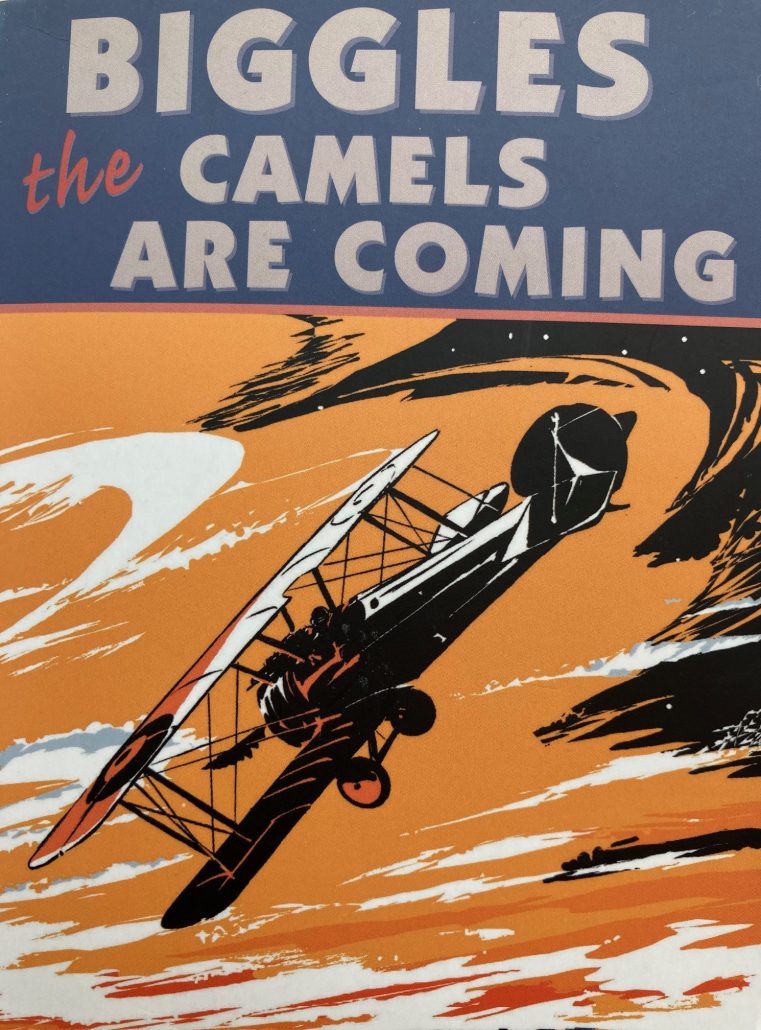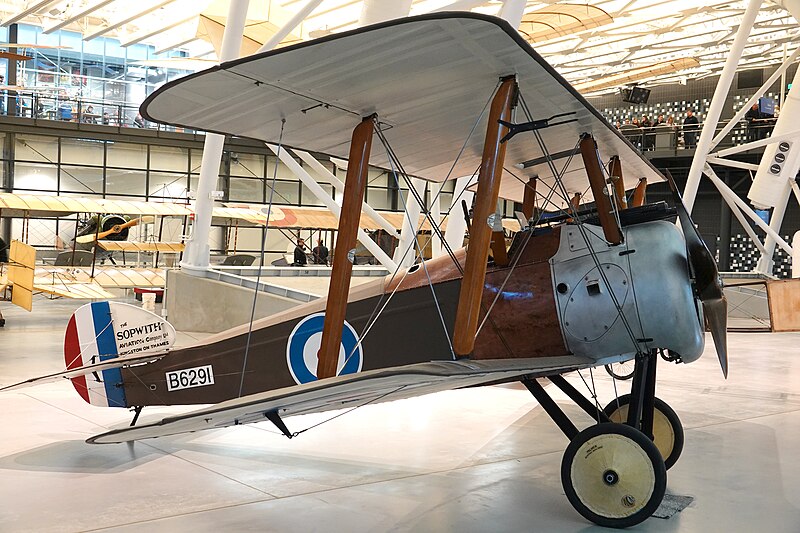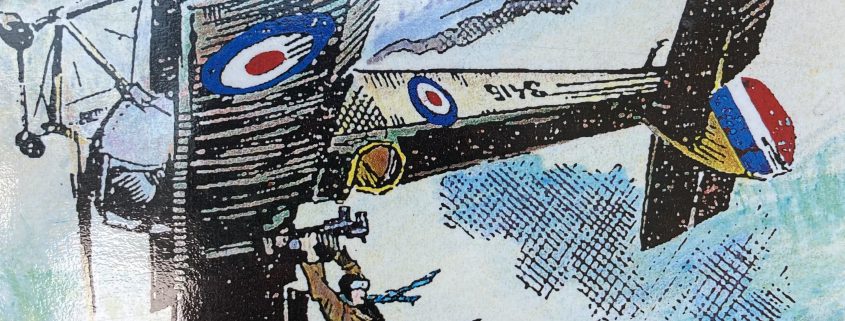Was Biggles in Real Life a Dorset Farmer?
At 2.30p.m. on Tuesday 05 November at Gold Hill Museum Tony Otton will give an illustrated talk on the remarkable career of aviation pioneer Louis Strange, born on the family farm at Spetisbury, Dorset, in 1891. The first powered flight in Britain was achieved in 1908 by the American Samuel Cody. Louis Strange saw the first Bournemouth Air Show in 1910, where Charles Rolls, co-founder with Henry Royce of Rolls Royce Ltd, crashed and was killed. Undeterred, Strange took his first flight in 1911 as the passenger of exhibition pilot Lewis Turner, who lived at Sturminster Newton but was best known for stirring flying displays at Hendon. Having been kicked by an unruly ewe in July 1913, and rendered temporarily unfit for farm work, Strange sought out Turner at Hendon, determined to learn to fly. By the end of 1913 Strange was established as an exhibition flier, race winner, and instructor. In 1914 he transferred from the Dorset Yeomanry to the infant Royal Flying Corps, and trained on military aircraft – such as they were – at the Central Flying School on Salisbury Plain. In August 1914 he was one of 37 pilots who left for France in a motley collection of under-powered aircraft, with a brief to gather intelligence on the enemy’s movements. This was a hazardous pursuit, with slow and level flight often provoking a hail of friendly fire. Strange and his colleagues, lacking an effective playbook, began to write their own, as you can read in an earlier blog. By August 1915 Strange was the last of the original 37 still in France, and a wise C.O. ensured that he was posted to Home Establishment, where his talents and experience could be employed in improving the quality of training and thus the longevity of new pilots. He didn’t return permanently to France, in a much more exalted role, until July 1918.

Captain W.E. Johns might have been remembered as the RAF Recruiting Officer who in 1922 rejected the thinly disguised Lawrence of Arabia, who presented himself as T.E. Shaw. When “Shaw” came back with an official letter from the Air Ministry, Johns referred the weedy specimen as a special case to the medical officer, who also declined to accept “Shaw.” By the winter of 1928/29 Aircraftsman Shaw had been posted to RAF Miramshah in British India, where his presence complicated the first mass evacuation by air from Afghanistan.
Johns states in his Foreword that Biggles was a fictitious character, yet he could have been found in any RFC mess during those great days of 1917 and 1918 when … air duelling was a fine art … he represents the spirit of the RFC – daring and deadly when in the air, devil-may-care and debonair on the ground. By the last chapter Biggles has been promoted Major to command 319 Squadron, and crash-lands behind German lines, only to discover that an Armistice has been signed half an hour earlier. It’s a great ending but one that would have to be forgotten about as Johns began writing another 90 or so Biggles books, which ultimately also embraced the inter-war period, the Battle of Britain, and the beginning of the Cold War. Biggles is said to have been born in India in 1899, which makes him just about old enough to have flown a Sopwith Camel and young enough to have been a Squadron Leader in 1940.

The Sopwith F1 earned the nickname “Camel” because of the hump over its forward-facing twin Vickers machine guns, synchronised to avoid hitting the propeller. It was introduced in 1917 when Louis Strange was Assistant Commandant at the Central Flying School. In the hands of an experienced pilot it was a formidable piece of kit, but too many novices lost control, and their lives. In spite of the care we took, Strange wrote, Camels continually spun down out of control when flew [sic] by pupils on their first solos. At length, with the assistance of Lieut Morgan, who managed our workshops, I took the main tank out of several Camels and replaced [them] with a smaller one, which enabled us to fit in dual control.
Both Strange and Biggles have breaks from their RAF service between the Wars. Strange retired on medical grounds in 1921 while according to Hilary Mantel Biggles was a charter pilot with a side-line in working for MI6. After going back to farming, in the 30s Strange became involved in the running of commercial airlines. In 1939 he joined the RAF Volunteer Reserve as a humble Pilot Officer; by 1944 he was helping to plan the execution of the D Day Campaign, and back in France. His story is (pardon the pun) stranger than fiction.
Tony’s fascinating talk is free to S&DHS members. Seats should be available to non-members from 2.20p.m. on payment of £5 at the door.



